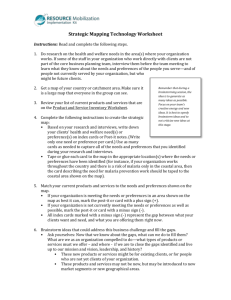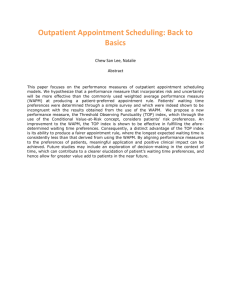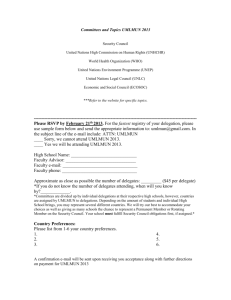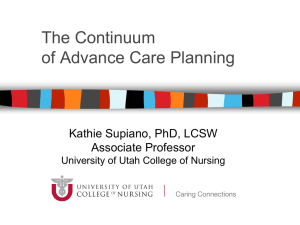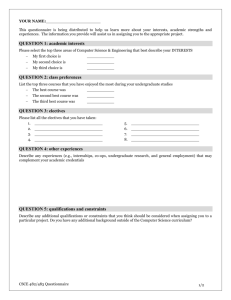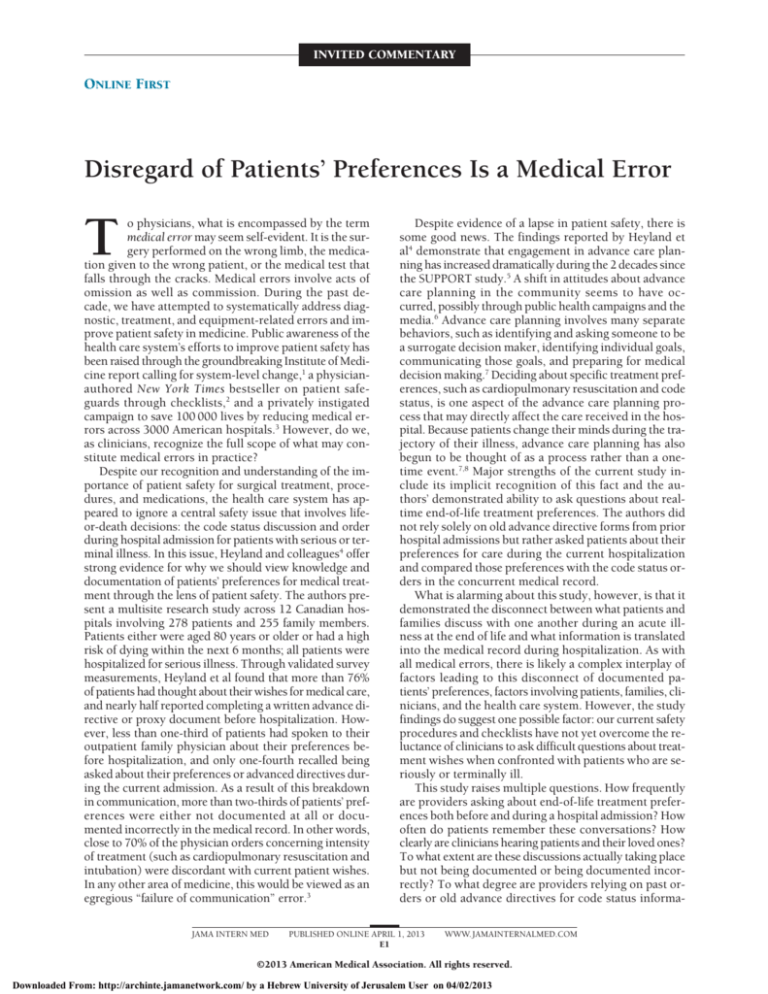
INVITED COMMENTARY
ONLINE FIRST
Disregard of Patients’ Preferences Is a Medical Error
T
o physicians, what is encompassed by the term
medical error may seem self-evident. It is the surgery performed on the wrong limb, the medication given to the wrong patient, or the medical test that
falls through the cracks. Medical errors involve acts of
omission as well as commission. During the past decade, we have attempted to systematically address diagnostic, treatment, and equipment-related errors and improve patient safety in medicine. Public awareness of the
health care system’s efforts to improve patient safety has
been raised through the groundbreaking Institute of Medicine report calling for system-level change,1 a physicianauthored New York Times bestseller on patient safeguards through checklists,2 and a privately instigated
campaign to save 100 000 lives by reducing medical errors across 3000 American hospitals.3 However, do we,
as clinicians, recognize the full scope of what may constitute medical errors in practice?
Despite our recognition and understanding of the importance of patient safety for surgical treatment, procedures, and medications, the health care system has appeared to ignore a central safety issue that involves lifeor-death decisions: the code status discussion and order
during hospital admission for patients with serious or terminal illness. In this issue, Heyland and colleagues4 offer
strong evidence for why we should view knowledge and
documentation of patients’ preferences for medical treatment through the lens of patient safety. The authors present a multisite research study across 12 Canadian hospitals involving 278 patients and 255 family members.
Patients either were aged 80 years or older or had a high
risk of dying within the next 6 months; all patients were
hospitalized for serious illness. Through validated survey
measurements, Heyland et al found that more than 76%
of patients had thought about their wishes for medical care,
and nearly half reported completing a written advance directive or proxy document before hospitalization. However, less than one-third of patients had spoken to their
outpatient family physician about their preferences before hospitalization, and only one-fourth recalled being
asked about their preferences or advanced directives during the current admission. As a result of this breakdown
in communication, more than two-thirds of patients’ preferences were either not documented at all or documented incorrectly in the medical record. In other words,
close to 70% of the physician orders concerning intensity
of treatment (such as cardiopulmonary resuscitation and
intubation) were discordant with current patient wishes.
In any other area of medicine, this would be viewed as an
egregious “failure of communication” error.3
JAMA INTERN MED
Despite evidence of a lapse in patient safety, there is
some good news. The findings reported by Heyland et
al4 demonstrate that engagement in advance care planning has increased dramatically during the 2 decades since
the SUPPORT study.5 A shift in attitudes about advance
care planning in the community seems to have occurred, possibly through public health campaigns and the
media.6 Advance care planning involves many separate
behaviors, such as identifying and asking someone to be
a surrogate decision maker, identifying individual goals,
communicating those goals, and preparing for medical
decision making.7 Deciding about specific treatment preferences, such as cardiopulmonary resuscitation and code
status, is one aspect of the advance care planning process that may directly affect the care received in the hospital. Because patients change their minds during the trajectory of their illness, advance care planning has also
begun to be thought of as a process rather than a onetime event.7,8 Major strengths of the current study include its implicit recognition of this fact and the authors’ demonstrated ability to ask questions about realtime end-of-life treatment preferences. The authors did
not rely solely on old advance directive forms from prior
hospital admissions but rather asked patients about their
preferences for care during the current hospitalization
and compared those preferences with the code status orders in the concurrent medical record.
What is alarming about this study, however, is that it
demonstrated the disconnect between what patients and
families discuss with one another during an acute illness at the end of life and what information is translated
into the medical record during hospitalization. As with
all medical errors, there is likely a complex interplay of
factors leading to this disconnect of documented patients’ preferences, factors involving patients, families, clinicians, and the health care system. However, the study
findings do suggest one possible factor: our current safety
procedures and checklists have not yet overcome the reluctance of clinicians to ask difficult questions about treatment wishes when confronted with patients who are seriously or terminally ill.
This study raises multiple questions. How frequently
are providers asking about end-of-life treatment preferences both before and during a hospital admission? How
often do patients remember these conversations? How
clearly are clinicians hearing patients and their loved ones?
To what extent are these discussions actually taking place
but not being documented or being documented incorrectly? To what degree are providers relying on past orders or old advance directives for code status informa-
PUBLISHED ONLINE APRIL 1, 2013
E1
WWW.JAMAINTERNALMED.COM
©2013 American Medical Association. All rights reserved.
Downloaded From: http://archinte.jamanetwork.com/ by a Hebrew University of Jerusalem User on 04/02/2013
tion, an unacceptable shortcut in the care of patients near
the end of their lives? Because patients do seem to be engaging in advance care planning and making decisions
about treatment preferences in the absence of discussions with physicians, how can we be sure that patients
and their surrogate decision makers understand their individual prognoses and the consequences of their treatment preferences?
Discussions about goals of care and code status constitute a medical procedure every bit as important to patient safety as a central line placement or a surgical procedure. Much as we have developed systems to improve
patient safety in surgical procedures, we need to develop systematic approaches to discussing patient values and goals of care. The miscommunication of patients’ end-of-life preferences demonstrated by Heyland
et al4 implies that goals-of-care discussions are not occurring regularly. In a recent study of patient-physician
communication at hospital admission, Anderson et al9
observed that some physicians appear uncomfortable with
these discussions. They also identified reproducible communication techniques and behaviors (acknowledging the
possibility of death and facilitating discussion of patient
concerns) that may lead to a better standard of practice.
Although several aspects of the health care system will
need to be addressed to fix this common and consequential medical error, standardizing both the content of clinicians’ discussions and the documentation of patient preferences may be an important first step. If we are truly
committed to improving patient safety and reducing medical errors, then we have found a worthy new target: the
inpatient code status discussion and accurate medical
documentation of real-time patient preferences.
Theresa A. Allison, MD, PhD
Rebecca L. Sudore, MD
JAMA INTERN MED
Published Online: April 1, 2013. doi:10.1001
/jamainternmed.2013.203
Author Affiliations: San Francisco VA Medical Center
(Drs Allison and Sudore), and Division of Geriatrics, Departments of Medicine (Drs Allison and Sudore) and Family and Community Medicine (Dr Allison), University of
California, San Francisco.
Correspondence: Dr Allison, San Francisco VA Medical
Center, 4150 Clement St, PO Box 181-G, San Francisco,
CA 94941 (Theresa.Allison@UCSF.edu).
Conflict of Interest Disclosures: None reported.
Disclaimer: The opinions reflected in this commentary
are those of the authors and do not reflect the opinions
of the San Francisco VA Medical Center or the University of California.
1. Kohn LT, Corrigan JM, Donaldson MS; Editors Committee on Quality of Health
Care in America. To Err is Human: Building a Safer Health System. Washington, DC: Institute of Medicine, National Academies Press; 2000.
2. Gawande A. The Checklist Manifesto: How to Get Things Right. New York, NY:
Metropolitan Press; 2010.
3. Wachter RM, Pronovost PJ. The 100,000 Lives Campaign: a scientific and policy
review. Jt Comm J Qual Patient Saf. 2006;32(11):621-627.
4. Heyland DK, Barwich D, Pichora D, et al; ACCEPT Study Team, Canadian
Researchers at the End of Life Network (CARENET). Failure to engage hospitalized elderly patients and their families in advance care planning [published online April 1, 2013]. JAMA Intern Med. doi:10.1001/jamainternmed
.2013.180.
5. The SUPPORT Principal Investigators. A controlled trial to improve care for
seriously ill hospitalized patients: the Study to Understand Prognoses and Preferences for Outcomes and Risks of Treatments (SUPPORT). JAMA. 1995;
274(20):1591-1598.
6. Sudore RL, Landefeld CS, Pantilat SZ, Noyes KM, Schillinger D. Reach and
impact of a mass media event among vulnerable patients: the Terri Schiavo
story. J Gen Intern Med. 2008;23(11):1854-1857.
7. Sudore RL, Fried TR. Redefining the “planning” in advance care planning:
preparing for end-of-life decision making. Ann Intern Med. 2010;153(4):256261.
8. Kirchhoff KT, Hammes BJ, Kehl KA, Briggs LA, Brown RL. Effect of a diseasespecific advance care planning intervention on end-of-life care. J Am Geriatr
Soc. 2012;60(5):946-950.
9. Anderson WG, Kools S, Lyndon A. Dancing around death: hospitalistpatient communication about serious illness. Qual Health Res. 2013;23(1):
3-13.
PUBLISHED ONLINE APRIL 1, 2013
E2
WWW.JAMAINTERNALMED.COM
©2013 American Medical Association. All rights reserved.
Downloaded From: http://archinte.jamanetwork.com/ by a Hebrew University of Jerusalem User on 04/02/2013

